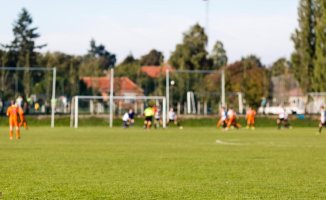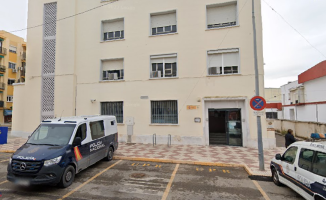Alternative protein-based foods in 3D printing. New ingredients made use of fractions of products that are discarded, with new processing technologies or more productive transgenic rice. These are some of the projects in which researchers from the Escola Tècnica Superior d'Enginyeria Agroalimentària i Forestal i de Veterinària (ETSEAFIV) of the University of Lleida are celebrating their half century of life.
On November 20, 1972, the first course began in a school farm owned by the Diputación de Lleida on the Huesca highway. Some difficult and precarious beginnings gave way to a success story, the main agri-food, forestry and veterinary campus in Catalonia, according to its director, Jordi Graell. Some eleven thousand graduates have been trained, most of them from agricultural and forestry careers, and fewer -because they are more recent- in food technology, biotechnology or veterinary medicine and its Agrotecnio agri-food research center is part of the CERCA network of the Generalitat .
Robert Soliva, professor of Food Technology, is the scientific director of the UdL food technology pilot plant, located in the Lleida Agri-Food Science and Technology Park, which began its activity in 2019.
The plant works with biotechnology and nanotechnology tools to develop, for example, protein-based products with ingredients of vegetable origin so that they can be texturized and obtain analogues of animal protein, a test bench in which several companies have already taken an interest. .
He is the principal investigator in two projects funded by the Spanish Research Agency. One is aimed at new processing technologies taking advantage of food fractions that are currently discarded and another to develop physical processing technologies that allow the generation of business models based on 3D printing.
"We have started to work with food matrices rich in starch, since they are products that offer many possibilities to work with 3D printing," he says. "Our idea is to work with more complex products, such as cereal or legume flours, which allow us to move towards printing plant-based products and alternative protein-based products," he adds.
Soliva belongs to the Innovative Technologies for Obtaining Food Ingredients and Products research group led by Olga Martín Belloso, which she says is "the real crack".
Martín Belloso is the only Spanish woman in the International Union of Food Science and Technology. Narcís Monturiol Medal 2018, investigates food packaging using edible coatings. She is behind four UdL patents related to the use of dietary fiber obtained from fruits and is a world reference in non-thermal food processing, with electrical pulses.
"Electrical pulses are currently beginning to be used for pasteurizing, but above all it is being used with other types of less energy applications that allow juices to have more active compounds, we have developed it," he specifies.
Medalla Narcís Monturiol 22 is also the professor of Edaphology Rosa Maria Poch, president of the Intergovernmental Panel on Soils (ITPS) of the Food and Agriculture Organization of the United Nations (FAO). Poch is finalizing his project, Loessiberus, on the land of Terres del Ebre, so valued in the vineyards of Terra Alta and Montsant, in particular for the Garnacha grape.
Jose Antonio Martínez Casanovas belongs to the Precision Agriculture Research Group that works on the use of information that can be extracted from crop and farm maps from satellite and drone images to better manage the production of agricultural crops using less fertilizers.
In one of his projects, using LiDAR (Light Detection And Ranging) technology, laser beams and other types of sensors, he builds a very detailed three-dimensional model of the trees of a plantation to be able to make very precise measurements and to be able to apply nutrients more precisely. and phytosanitary.
Improving the photosynthesis of rice to which bacterial proteins have been introduced to make it more productive is one of the projects of the Biotechnology professor and member of the Biotechnology and Agricultural Bioeconomy Unit research group, Teresa Capell.
“We are investigating whether rice to which a gene has been introduced will be capable of fixing nitrogen in the future, that is, whether it can be grown without the need for fertilizer. If rice were shown to be possible, then it could be translated into other cereals,” he says.
Researchers from various countries participate in his team, including the Chinese Xin Huang and Wenshu He.
“I met Teresa Capell and Paul Christou (ICREA researcher) while I was doing my master's degree at the university in China. I came here to do my PhD in their lab because they are very good at rice biotechnology and they have many publications in that field,” Wenshu He points out.
Xin Huang, also interested in the molecular biology of rice, came to Lleida for the same reason: "The laboratory where I am doing my doctorate has a very good international reputation for its many achievements in the field of crop research, especially in cereals. That's the reason I came here."
Joan Estany belongs to a research group for genetic improvement and animal health that is working on several projects, one of which is to achieve a good distribution of intramuscular fat, both thinking of ham without increasing what would be the rest of the body fat, including some genetic markers, and another the search for genetic markers that can give resistance or at least resilience to some diseases.
The director of the ETSEAFIV recalls that the Lleida school was the fourth agricultural engineering school in Spain, one of the so-called G-4 group. The first was in Madrid, the second was installed in Córdoba and the third was in Valencia. Jordi Graell points out that forestry and careers related to the agri-food sector were added to the agronomist studies to train professionals in agriculture and livestock, two sectors with significant weight in the local economy.













